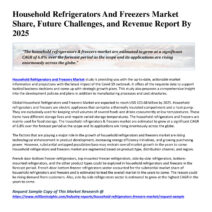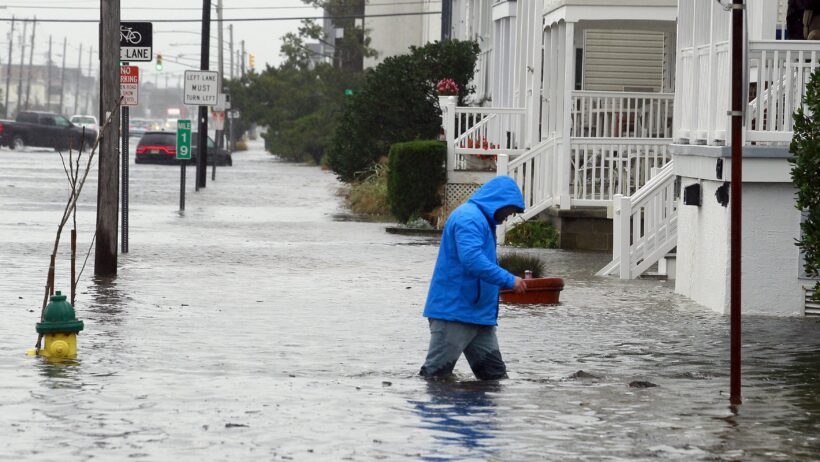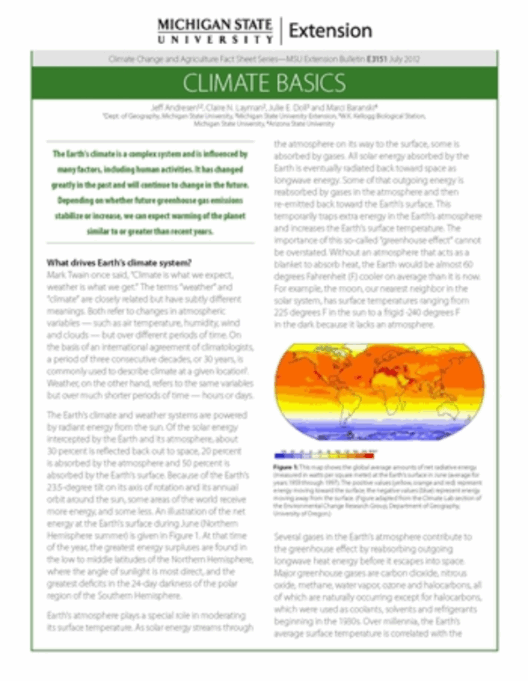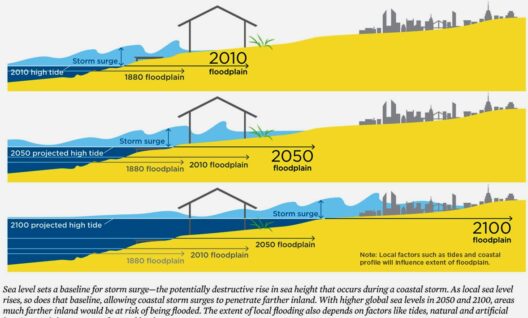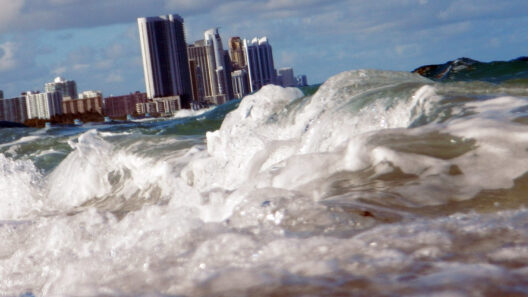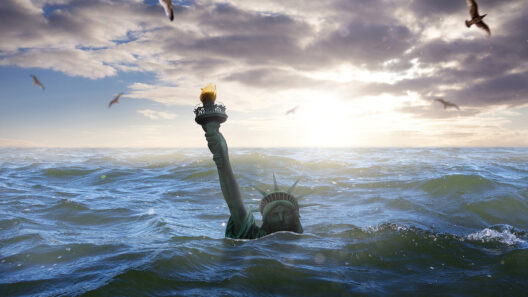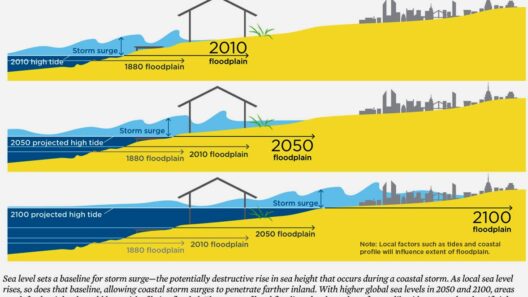As the sun dips below the horizon, painting the sky in hues of orange and pink, it is easy to forget the relentless battles occurring beneath the waves. The oceans, often perceived as vast and eternal, are metamorphosing before our very eyes, submerged under the weight of human incursion and climatic transformations. The rapid rise of sea levels is more than just an ecological concern; it is a poignant reminder of our fragile relationship with nature and the crests of change that threaten to reshape life as we know it.
The dynamic shift of sea levels presents an ever-pressing doorway to myriad global consequences. Infrastructure is challenged, ecosystems are strained, and communities are poised on the precipice of displacement. Each inch of elevation in ocean waters is a harbinger of a broader narrative, one woven with the threads of climate change, glacial retreat, and the pervasive melting of polar ice caps.
Understanding how quickly sea levels are rising necessitates tackling both the human influences upon our natural world and the scientific measurements that unveil the chilling reality of our changing planet.
The Accelerating Tide of Change
Historically, sea level rise has been a slow-moving phenomenon, akin to a glacier inching its way down a mountainside. However, the past few decades have witnessed an acceleration akin to a fierce flood tide. According to scientific consensus, current sea levels are rising at an alarming rate of approximately 3.3 millimeters per annum —a pace that has more than doubled since the 1990s due to climate change ramifications.
As atmospheric temperatures escalate, glaciers and ice sheets around the world are facing unprecedented thawing, expediting the influx of freshwater into our oceans. The iconic Greenland and Antarctic ice sheets, once thought to be resilient, are disintegrating, adding significantly to rising sea levels. Moreover, thermal expansion—an often-overlooked contributor—occurs as seawater warms, expanding in volume. This dual threat of melting ice and thermal expansion acts like a double helix of peril, intricately intertwining the consequences of climate change.
The Distress Signals of Coastal Communities
The effects of rising sea levels are not merely academic; they resonate profoundly in coastal communities worldwide. Island nations like the Maldives and Tuvalu face an existential crisis as their land slowly succumbs to the embrace of encroaching waters. The stark reality is that entire nations could vanish, leaving behind islands of memory submerged under the ocean’s surface—a haunting metaphor for the fragility of existence amidst environmental tumult.
Furthermore, urban centers situated along coastlines, such as New Orleans, New York, and Miami, must now reckon with the precariousness of their geographic locations. Storm surges, previously manageable, have become menacing adversaries, catapulting floodwaters into streets, homes, and businesses. Infrastructure shortage and inadequate defenses against this creeping tide compound the vulnerability of these communities.
In addition, the sociocultural fabric of these regions is at risk. As communities grapple with relocation and loss of property, the psychological toll of displacement from ancestral lands and cultural heritage weighs heavily on populations. The rise of climate refugees is not a distant concept but a present-day crisis, amplifying tensions over resources and exacerbating geopolitical instability.
The Ecological Ripple Effect
Beyond human implications, the environmental ramifications of rising sea levels present their own web of complexity. Ecosystems such as mangroves, salt marshes, and coral reefs serve as vital buffers against storm surges and coastal erosion. Yet, as seas rise, these natural defenses are threatened, with salt intrusion affecting freshwater ecosystems and biodiversity.
The delicate balance of marine habitats is further jeopardized. As temperatures soar and waters rise, species face altered migratory patterns, shifting distributions, and ultimately, the risk of extinction. Coral reefs, the vibrant undersea cities that house myriad marine life, are under siege due to both rising temperatures and ocean acidification, transforming into ghostly structures devoid of color and life.
Moreover, the repercussions extend to global food security as fisheries struggle to adapt to the shifting marine milieu, diminishing catch yields and threatening livelihoods dependent on these resources. The potential collapse of fisheries presents a paradox; as populations require greater sustenance, the oceans further stretch under the weight of human need, leading to unsustainable fishing practices that echo the cycle of depletion.
A Call to Action: Charting a Sustainable Path Forward
The rapid rise of sea levels is an urgent clarion call for collective action. Mitigation strategies must encompass a variety of approaches, from transitioning to renewable energy sources to enhancing the resilience of coastal infrastructures. Governments and communities alike must champion sustainable land-use practices while investing in adaptation strategies to buffer themselves against the inevitable tide of change.
In addition to infrastructural adaptations, education and awareness campaigns can empower individuals to advocate for their communities, emphasizing the urgency of climate dialogue and action. Building shared bridges—between nations, cultures, and communities—can foster collaboration in tackling this global challenge.
The sea, with its depths and mysteries, remains an immutable force. However, as its levels rise—much like the tide before a storm—it serves as an unmistakable reminder of our shared responsibilities. As stewards of this planet, it is imperative that we act, resilient in our pursuit of a future where the ocean’s waters rise not as a harbinger of loss, but as a testament to our ability to adapt, innovate, and thrive.


